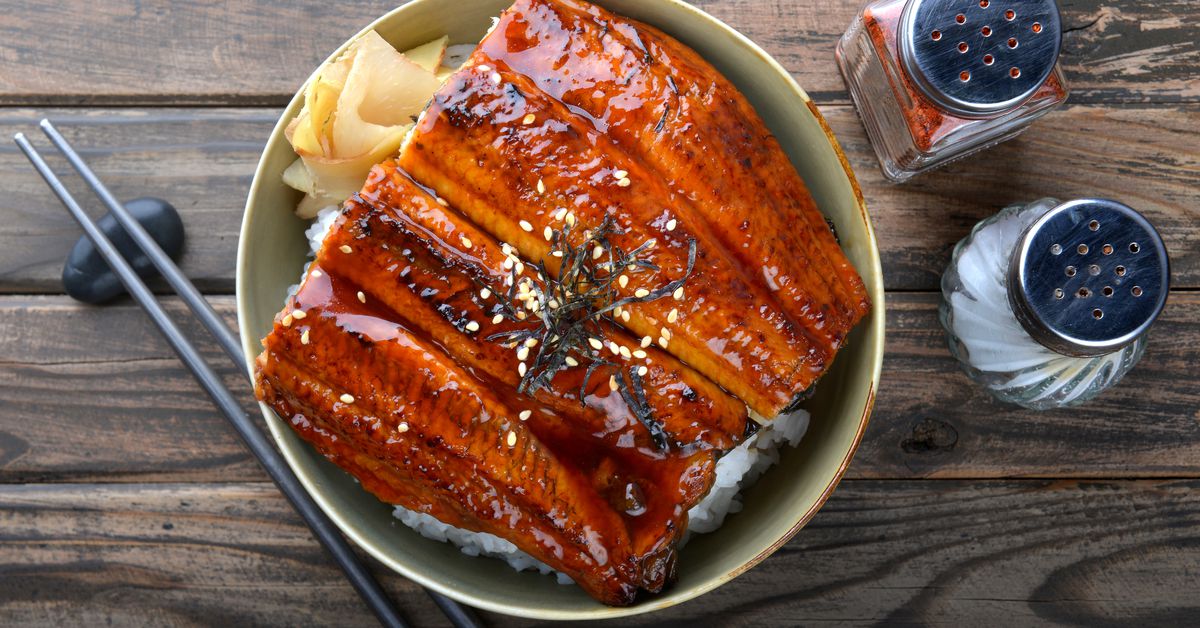
Eels are scrumptious: Regardless of a slimy, snake-like look, their mushy, wealthy meat is a favourite in the whole lot from beach fish fries to sushi to haute delicacies. However lately’s eel lover faces a predicament. The 3 main species of fit for human consumption eels (American, Ecu, and Eastern eels) are all endangered, some severely so. Many eels showing on menus are raised in China, the place restricted legislation signifies that eel farms can import the fish from unlawful or sustainably fished populations, after which develop them the use of probably destructive chemical compounds. So what’s a moral eel eater to do?
In an in a different way unassuming industry park in Waldoboro, Maine, one small corporate will have an answer. In this week’s episode of Gastropod, “Reinventing the Eel,” co-hosts Cynthia Graber and Nicola Twilley talk over with the brand-new business facility of American Unagi, the primary and handiest commercial-sized eel farm in North The us, the place pioneering eel farmer Sara Rademaker is making an attempt to modify the best way the U.S. buys and eats eel.
Probably the most demanding situations going through any wannabe eel farmer is that eels are notoriously elusive. The checklist of scientists who’ve attempted and did not get a grip at the lifestyles cycle and biology of the slippery fish is lengthy — and comprises Sigmund Freud, whose pioneering paintings on human sexuality was once in all probability impressed by way of his failure to seek out eel testicles as a 19-year-old scholar.
As of late, as Patrik Svensson, writer of The E-book of Eels, informed Gastropod, eels are nonetheless “probably the most mysterious fish.” Biologists imagine grownup eels reproduce after which die out in deep ocean water: for the American eels that finally end up in Maine, that spot is out within the Sargasso Sea, a bizarre, weed-covered sea within the western North Atlantic Ocean that’s additionally house to the Bermuda Triangle. However nobody has ever noticed an eel reproduce there, and nobody has controlled to persuade the American eel to breed in captivity.
What that suggests is that eel farmers need to supply all their child eels from the wild — which, in flip, makes the yearly American glass eel catch, when hundreds of thousands of tiny, wriggly, see-through child eels swim up estuaries and rivers and into the ready nets of fishers in Maine, some of the global’s maximum profitable according to pound.
Till lately, all child eels had been trucked from Maine to NYC, and shipped out to Asia in a single day. To Rademaker, that simply didn’t make sense. “It’s the Most worthy fishery according to pound, and the whole lot of the fishery is getting shipped to China to be grown,” she says. “I used to be like, all proper, smartly, we will have to simply do that right here! Why isn’t any one doing this?” Like several just right innovators, Rademaker began out in her basement, rising a couple of eels from small children to mature adults in tanks. Nevertheless it wasn’t until she harvested and smoked her first eels that she knew she was once onto a winner. “I actually had like an epiphany over the slicing board once I took the primary eels that I had grown,” she says. “I used to be identical to, I’ve to make this product. It’s extraordinary.”
From there, Rademaker advanced a pilot facility for American Unagi. This yr, the corporate has expanded into their brand-new commercial-sized facility, the place Rademaker can’t handiest lift greater than 1,000,000 eels to maturity annually, but additionally procedure, smoke, and package deal them on the market. Each and every American Unagi eel is traceable again to Maine’s tightly regulated fishery, raised with out destructive chemical compounds — and, what’s extra, as a result of about 90 p.c of Rademaker’s child eels live on to maturity at the farm, in comparison to about one p.c within the wild, she’s truly profiting from a restricted wild useful resource. As Rademaker likes to mention, “It’s a greater eel.”
Rademaker’s eels made their option to marketplace as complete fish, butterflied filets, scrumptious alder- and oak-smoked filets, and canned smoked eel from Gulf of Maine Conservas. Even along with her expanded farm amenities, 95 p.c of eel eaten in The us will nonetheless be grown out of the country, however Rademaker is hoping to enlarge. And, within the intervening time, she’s operating with scientists to assist resolve probably the most eel’s many mysteries — and, within the procedure, to assist put it aside.
Concentrate to this episode for the tale of the way the eel has eluded scientists for hundreds of years, whilst people trusted them for meals or even forex (eels had been one of the vital commonplace tactics to pay hire in medieval England!). Gastropod additionally is going middle of the night eel fishing — and makes the case for why you will have to serve eel at your subsequent Thanksgiving dinner. Observe and subscribe for extra.
